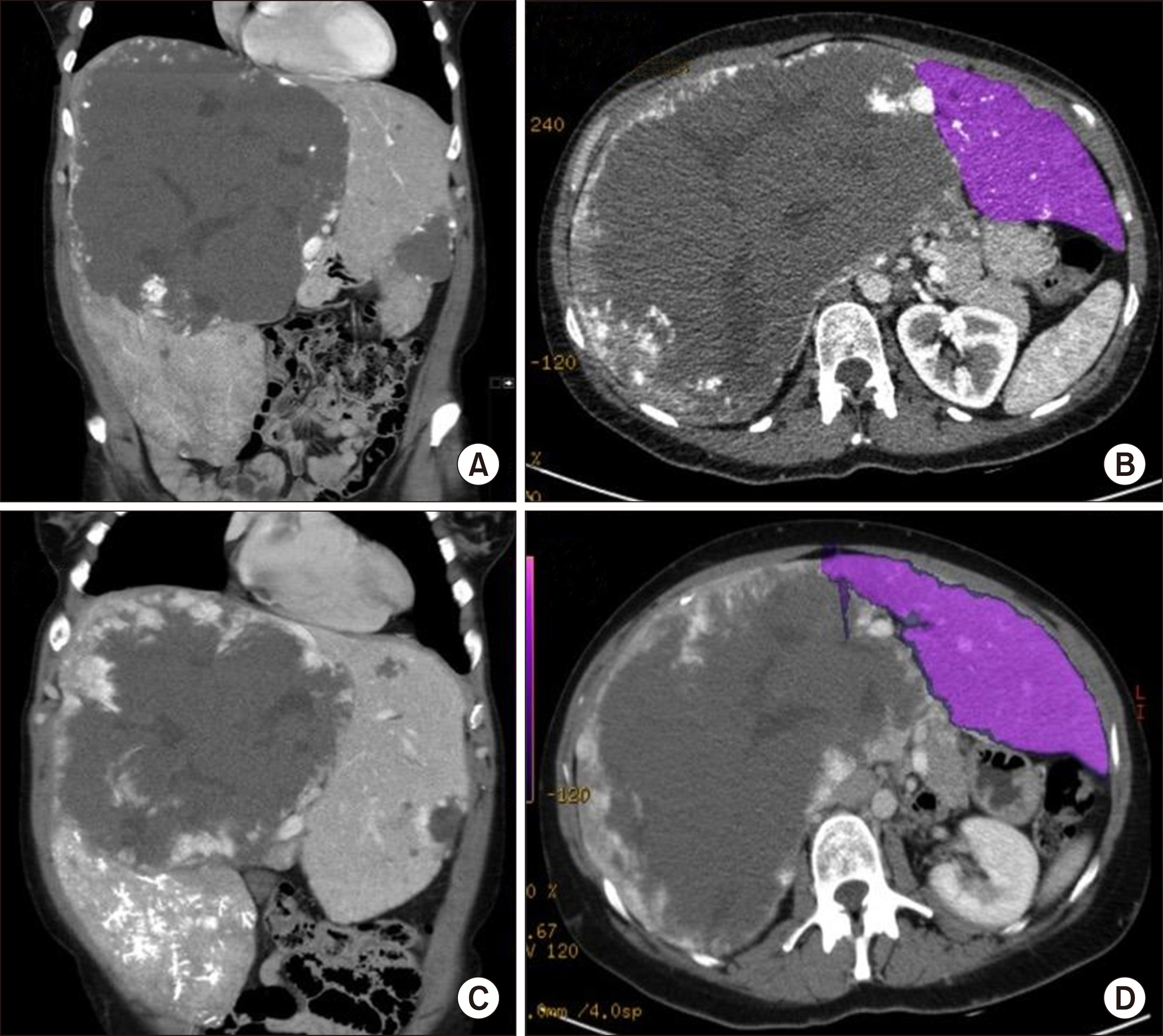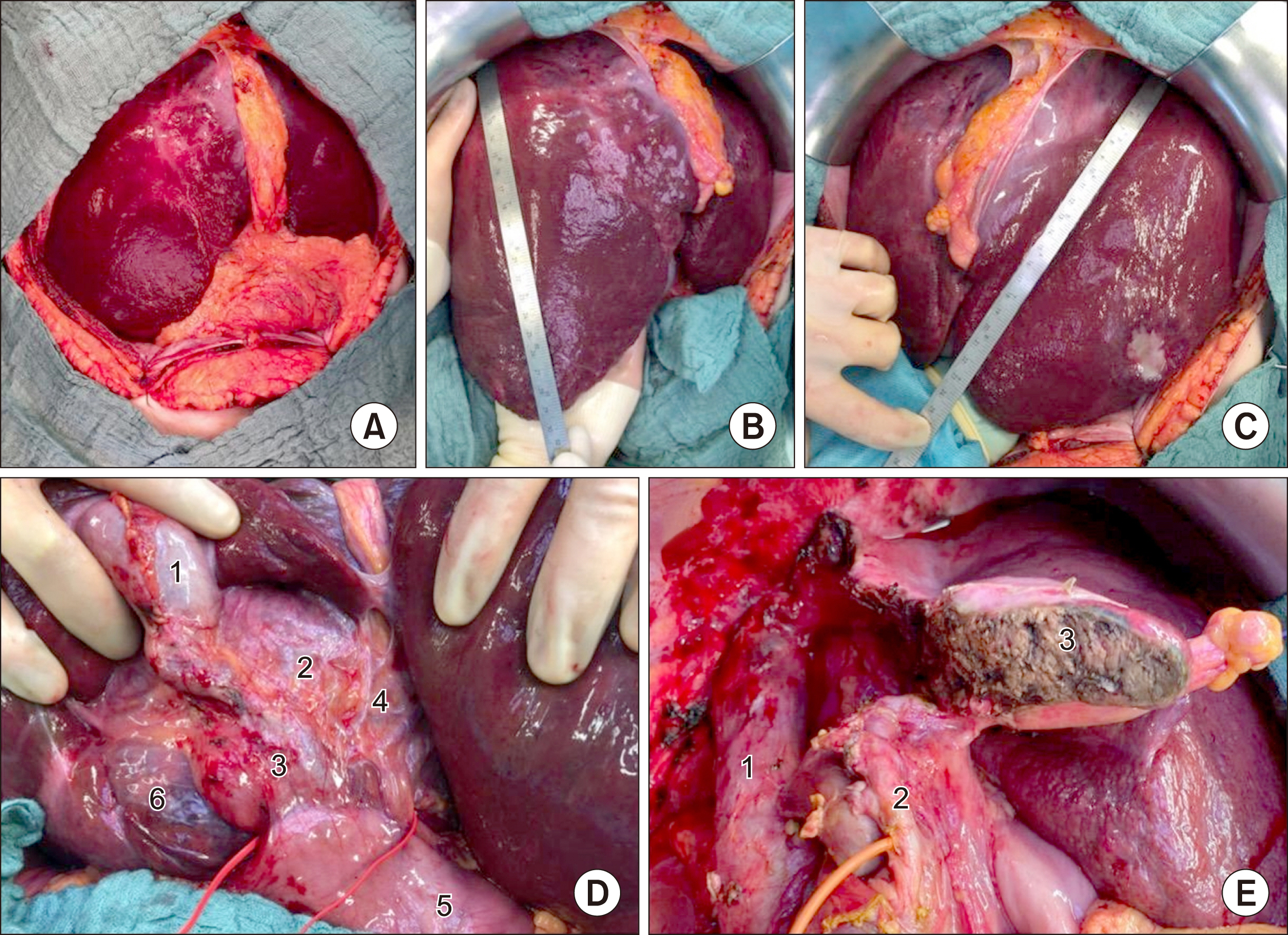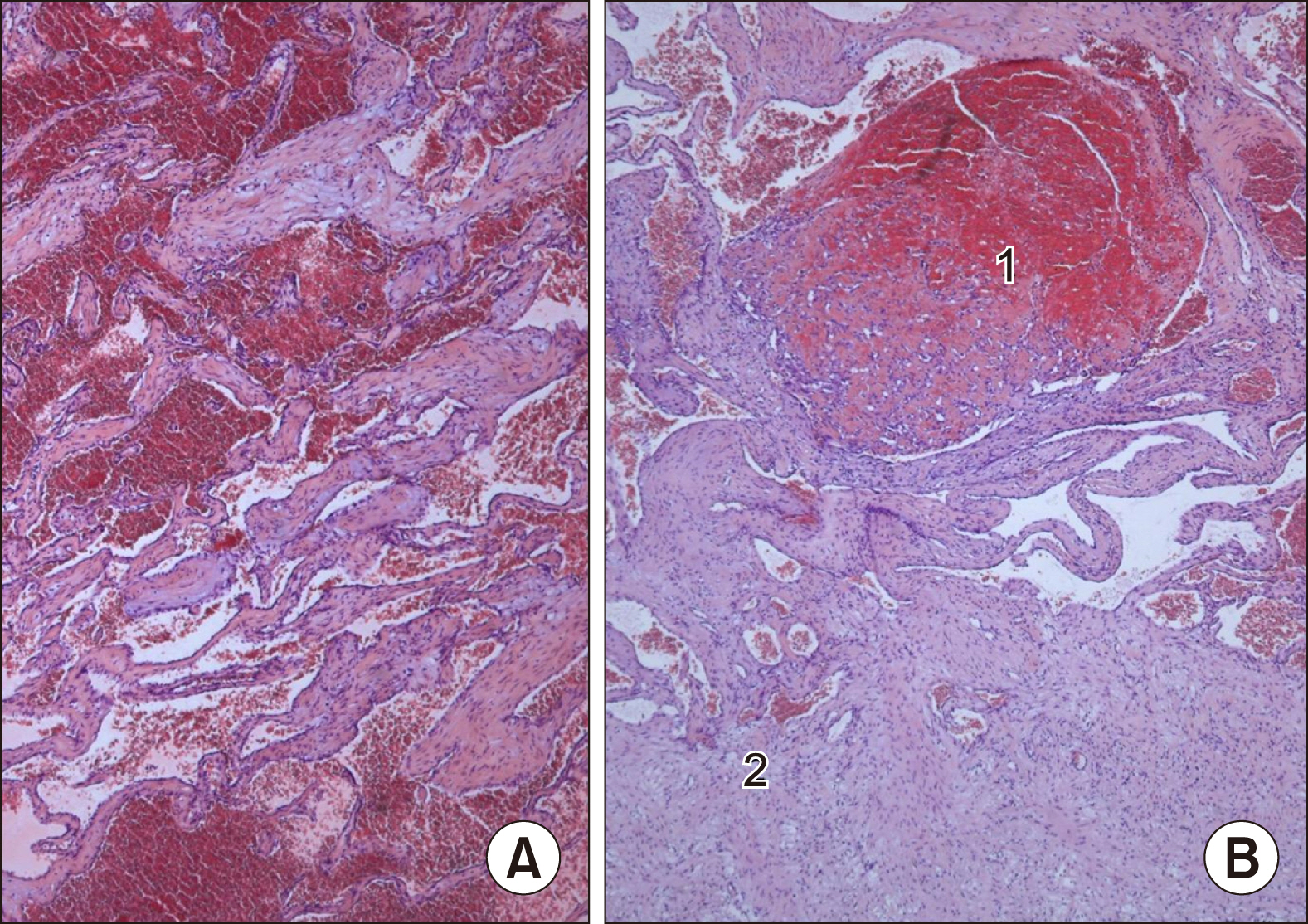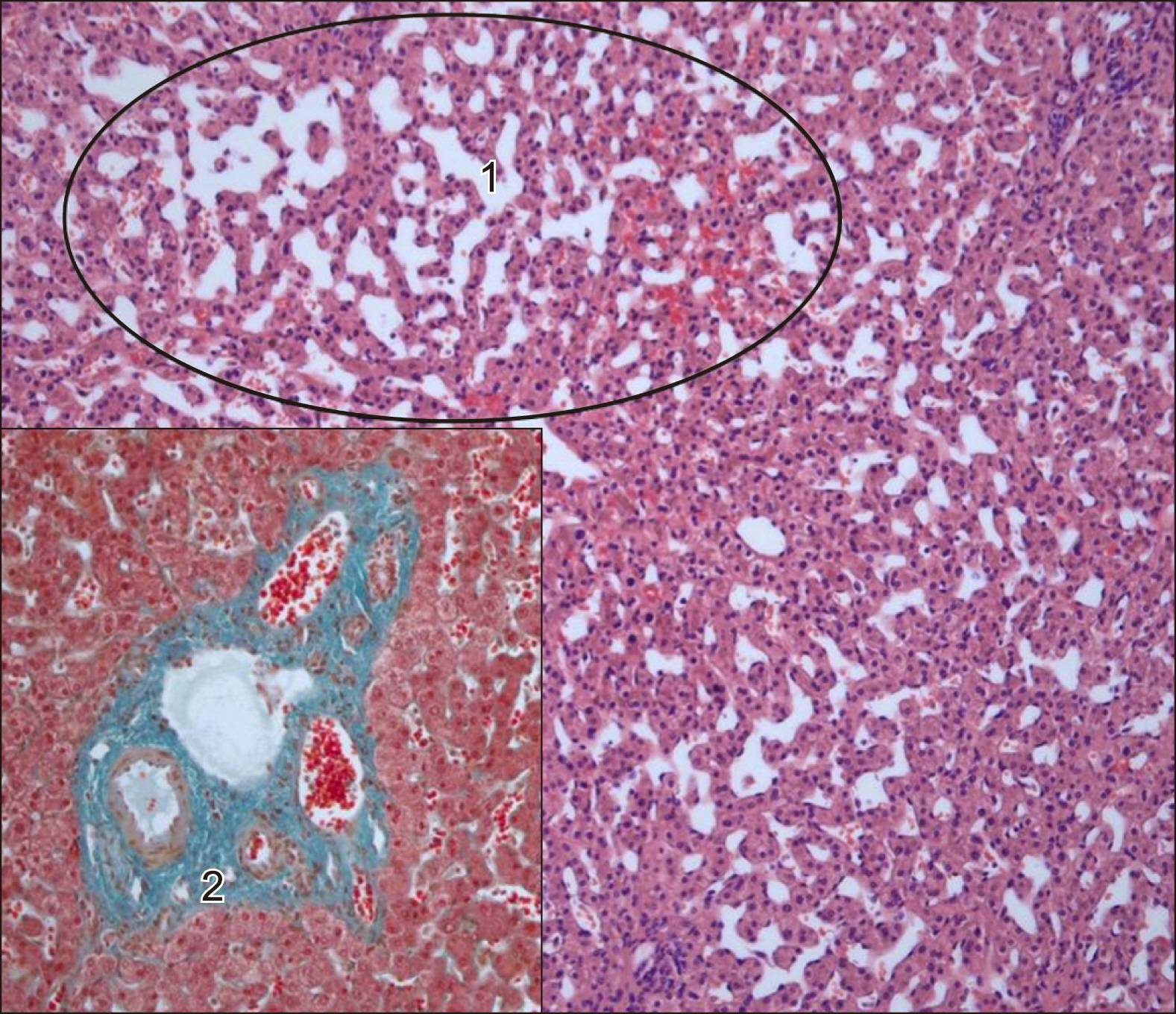Ann Hepatobiliary Pancreat Surg.
2020 Aug;24(3):357-361. 10.14701/ahbps.2020.24.3.357.
Extended liver resection including hypertrophy concept with portal venous embolisation for giant haemangioma. Too much surgery?
- Affiliations
-
- 1Division of Hepatobiliary and Pancreatic Surgery, Department of Surgery, Asklepios Hospital Barmbek,Hamburg, Germany
- 2Semmelweis University of Medicine, Asklepios Campus Hamburg, Germany
- 3MVZ Hanse Histologikum GmbH, Hamburg, Germany
- KMID: 2505351
- DOI: http://doi.org/10.14701/ahbps.2020.24.3.357
Abstract
- Haemangiomas of the liver are benign tumours, which are often diagnosed randomly. With an increase in size haemangiomas could become symptomatic. In this case therapeutic options, surgical or interventional, have to be weighted to a conservative approach. We present a case of a 36-year old woman with a symptomatic giant haemangioma of the right liver lobe. Because of the size of the tumor and the small future liver remnant we decided to perform a major liver resection after hypertrophy induction with a preoperative portal vein embolization; an option mainly used for major hepatectomies in malignant tumors of the liver. But however, this case shows, that using a hypertrophy concept also for benign liver tumours is the safer approach, if an extended resection is necessary and the future liver remnant is critical.
Figure
Reference
-
1. Farges O, Daradkeh S, Bismuth H. 1995; Cavernous hemangiomas of the liver: are there any indications for resection? World J Surg. 19:19–24. DOI: 10.1007/BF00316974. PMID: 7740805.
Article2. Fodor M, Primavesi F, Braunwarth E, Cardini B, Resch T, Bale R, et al. 2018; Indications for liver surgery in benign tumours. Eur Surg. 50:125–131. DOI: 10.1007/s10353-018-0536-y. PMID: 29875801. PMCID: PMC5968066.
Article3. Furumaya A, van Rosmalen BV, Takkenberg RB, van Delden OM, Dejong CHC, Verheij J, et al. 2019; Transarterial (chemo-)embolization and lipiodolization for hepatic haemangioma. Cardiovasc Intervent Radiol. 42:800–811. DOI: 10.1007/s00270-019-02169-x. PMID: 30783780. PMCID: PMC6503075.
Article4. Adhikari DR, Thakur V, Telavane PP, Kulkarni R, Singh R, Joshi RM. 2015; Hypergiant hepatic hemangiomas: case series. Indian J Surg. 77(Suppl 1):40–42. DOI: 10.1007/s12262-014-1104-8. PMID: 25972639. PMCID: PMC4425751.
Article5. Firouznia K, Ghanaati H, Alavian SM, Nassiri Toosi M, Ebrahimi Daryani N, Jalali AH, et al. 2014; Management of liver hemangioma using trans-catheter arterial embolization. Hepat Mon. 14:e25788. DOI: 10.5812/hepatmon.25788. PMID: 25737731. PMCID: PMC4329237.
Article6. Gao J, Ke S, Ding XM, Zhou YM, Qian XJ, Sun WB. 2013; Radiofrequency ablation for large hepatic hemangiomas: initial experience and lessons. Surgery. 153:78–85. DOI: 10.1016/j.surg.2012.06.004. PMID: 22853860.
Article7. Ziemlewicz TJ, Wells SA, Lubner MA, Musat AI, Hinshaw JL, Cohn AR, et al. 2014; Microwave ablation of giant hepatic cavernous hemangiomas. Cardiovasc Intervent Radiol. 37:1299–1305. DOI: 10.1007/s00270-014-0934-x. PMID: 25023180.
Article8. Duxbury MS, Garden OJ. 2010; Giant haemangioma of the liver: observation or resection? Dig Surg. 27:7–11. DOI: 10.1159/000268108. PMID: 20357445.
Article9. Glantzounis GK, Tokidis E, Basourakos SP, Ntzani EE, Lianos GD, Pentheroudakis G. 2017; The role of portal vein embolization in the surgical management of primary hepatobiliary cancers. A systematic review. Eur J Surg Oncol. 43:32–41. DOI: 10.1016/j.ejso.2016.05.026. PMID: 27283892.
Article10. Ketchum WA, Lin-Hurtubise KM, Ochmanek E, Ishihara K, Rice RD. 2019; Management of symptomatic hepatic "mega" hemangioma. Hawaii J Med Public Health. 78:128–131. PMID: 30972235. PMCID: PMC6452022.
- Full Text Links
- Actions
-
Cited
- CITED
-
- Close
- Share
- Similar articles
-
- Liver Regeneration following Extended Liver Resection combined with Pancreatoduodenectomy
- Blood Loss in Surgery for Aggressive Vertebral Haemangioma with and without Embolisation
- Robotic-assisted right hepatectomy via anterior approach for intrahepatic cholangiocarcinoma
- Portal vein embolization prior to hepatectomy: Techniques, outcomes and novel therapeutic approaches
- Computed Tomography Findings of Thrombosis and Aneurysm of the Portal Venous System








